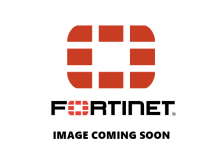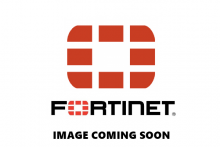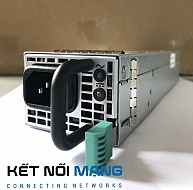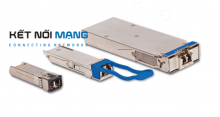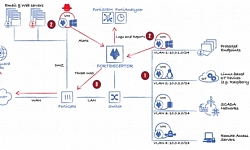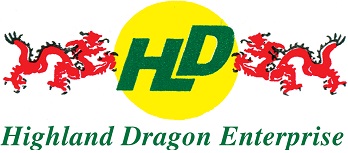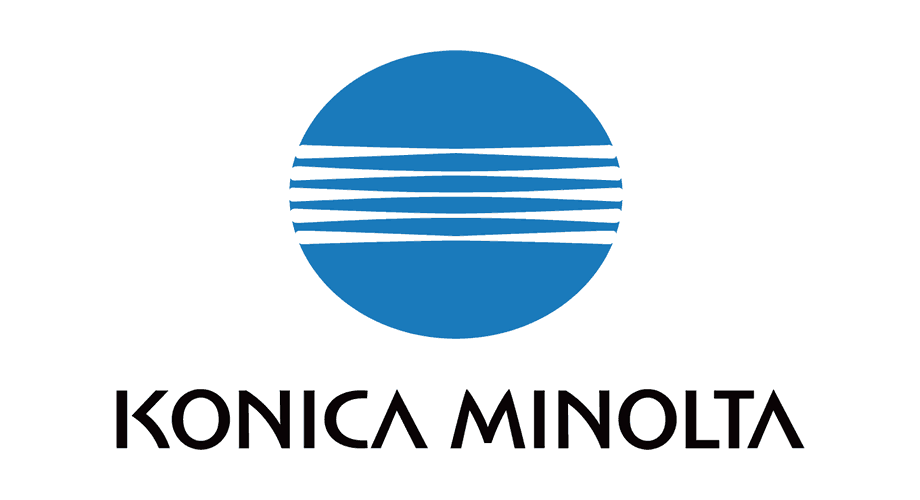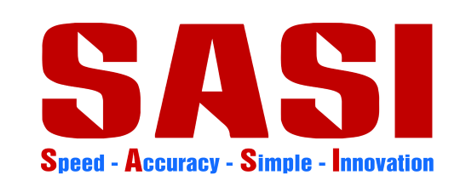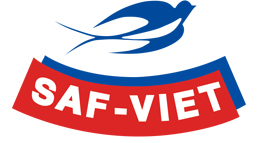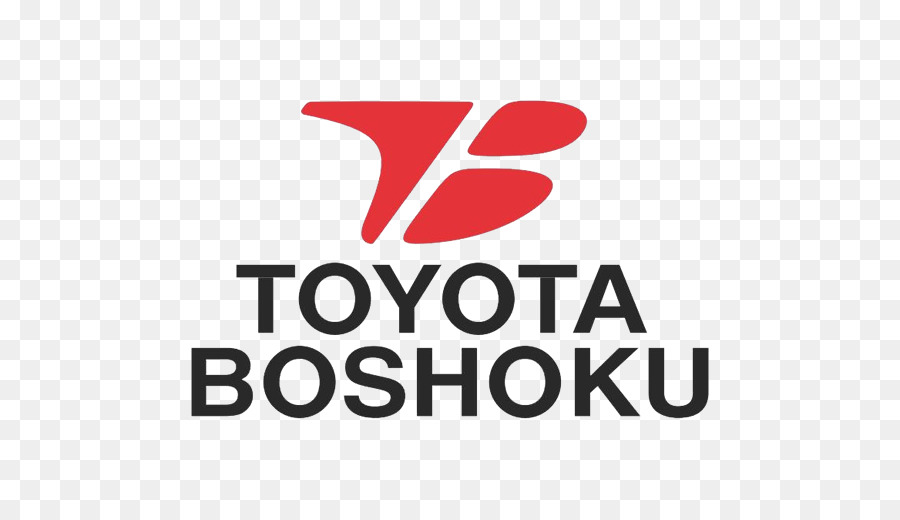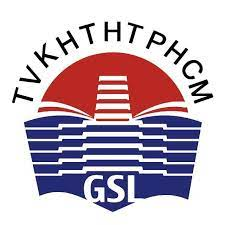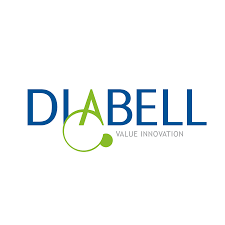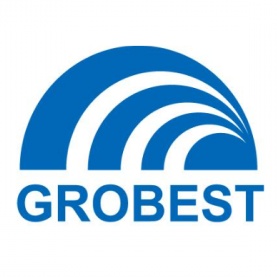
Fortinet FN-TRAN-SFP28-SR 25GE SFP28 transceiver module, short range
P/N: FN-TRAN-SFP28-SR25GE/10GE Dual Rate SFP28 transceiver module, short range for all systems with SFP28/SFP+ slots
Liên hệ ngay
Fortinet Transceivers
Transceiver Modules for Fortinet Products
Fortinet’s range of pluggable copper and optical transceiver modules are designed to complement Fortinet appliances that support transceiver module slots, including the FortiGate®, FortiSwitch™ and other appliance platforms.
Take the guesswork out of selecting transceivers
Common connectivity problems in enterprise and data center networks are often traced back to low-quality and incompatible transceiver modules, rather than a fault in the network appliances themselves. Fortinet’s transceivers have been purpose-built and tested to work with Fortinet equipment, ensuring that your network is as stable and robust as possible, and taking the guesswork out of selecting compatible transceivers.
Wide range for maximum flexibility
Supporting various form factors, media types and throughput, Fortinet transceivers provide connectivity options to meet many different network architectures and deployment scenarios. Whether your network demands high-speed 100 GE inside the data center, or long-range 1 GE to connect data centers in different cities, Fortinet has a transceiver to meet your needs.
Highlights
- Copper and optical options
- Supports SFP, SFP+, QSFP+, DAC, CFP2 and QSFP28 slots
- Performance from 1 Gbps to 100 Gbps
- Tested for compatibility with Fortinet appliances
Key Features and Benefits
| Various Interface Options | Fortinet transceivers support various interfaces, including: SFP, SFP+, DAC and newer high-speed standards including QSFP+, CFP2 and QSFP28. |
| Tested for Compatibility | You can rest assured that your Fortinet transceivers have been tested for compatibility on Fortinet products, taking the guesswork out of selecting transceivers for your environment |
| Maximize Network Uptime | Eliminate connectivity problems to maximize network uptime by using quality transceivers, designed to work with Fortinet products. |
| Cost Effective | Transceiver modules can be expensive, especially those with sensitive high-speed optics. Fortinet delivers high-quality transceivers, while keeping cost to a minimum. |
SFP transceiver modules are static sensitive devices. Use an ESD wrist strap or similar grounding device when handling transceiver modules.
Do not install or remove SFP transceiver modules while fiber-optic cables are still attached. This can cause damage to the cables, cable connectors, and the optical interfaces. It may also prevent the transceiver module from latching correctly into the socket connector.
Installing and removing SFP transceiver modules can shorten their useful life. Do not install or remove transceiver modules more than is necessary.
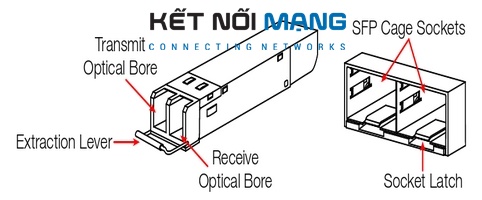
To install the SFP transceiver modules
1. Ensure that you are properly grounded.
2. Remove the caps from SFP cage sockets on the front panel of the unit.
3. Position the SFP transceiver module in front of the cage socket opening and ensure that the SFP transceiver module is correctly oriented. When the module is correctly oriented, the extraction lever will be level with the socket latch.
SFP cage socket orientation may vary. Ensure that the SFP transceiver module is correctly oriented each time that you are inserting a module.
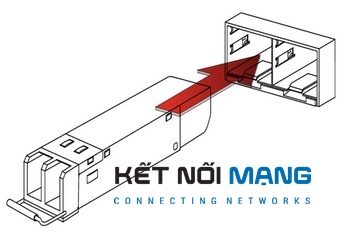
4. Hold the sides of the SFP transceiver module and slide it into the cage socket until it clicks into place.
Caution: Do not force the SFP transceivers into the cage slots. If the transceiver does not easily slide in and click into place, it may not be aligned correctly or may be upside down. If this happens, remove the SFP transceiver, realign it or rotate it and slide it in again.
5. Press the module firmly into the cage socket with your thumb.
6. Verify that the module is latched correctly by grasping the sides of the transceiver and trying to pull it out without lowering the extraction lever.
- If the module cannot be removed, it is installed and latched correctly.
- If the module can be removed, reinsert it and press harder with your thumb. If necessary, repeat this process until the module is securely latched into the cage socket.
To remove the SFP transceiver modules
1. Ensure that you are properly grounded.
2. If applicable, disconnect the fiber-optic cable from the SFP transceiver module connector and install a clean dust plug in the module’s optical bores.
3. Pull the extraction lever out and down to eject the module. If you are unable to use your finger to open the lever, use a small flat-head screwdriver or other similar tool to open the lever.
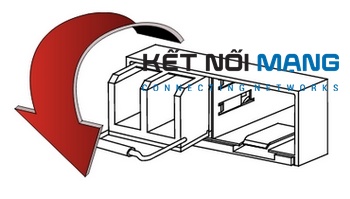
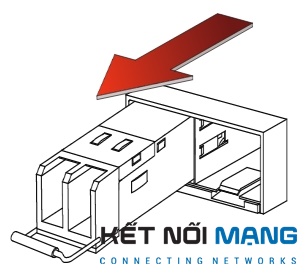
5. Replace the cap on the SFP cage socket and place the removed SFP transceiver module into an antistatic bag.
Note: Follow proper fibre-optic handling procedures when installing and removing SFP transceiver modules to ensure the devices remain clean and are not damaged.
Quick Reference Matrix
| SFP (GE) | XFP (10 GE) | SFP+ (10 GE) | QSFP+ (40 GE) | CFP2 (100 GE) | QSFP28 (100 GE) | |
| Maximum Transmission Distance | ||||||
| 10 Meter | SP-CABLE-ADASFP+ | |||||
| 30 Meter | FS-TRAN-SFP+GC | |||||
| 100 Meter | FG-TRAN-GC FS-TRAN-GC |
FG-TRAN-QSFP+SR & FG-TRAN-QSFP+SR-BIDI (on OM3 MMF) |
FG-TRAN-CFP2-SR10 | FG-TRAN-QSFP28-SR4 | ||
| 150 Meter | FG-TRAN-QSFP+SR & FG-TRAN-QSFP+SR-BIDI (on OM4 MMF) |
|||||
| 220 Meter | FG-TRAN-SX (62.5/125 µm) FR-TRAN-SX (62.5/125 µm) |
FS-TRAN-SFP+LRM | ||||
| 300 Meter | FG-TRAN-XFPSR (on OM3 MMF) |
FG-TRAN-SFP+SR FS-TRAN-SFP+SR |
||||
| 500 Meter | FG-TRAN-SX (50/125 µm) FR-TRAN-SX (50/125 µm) |
|||||
| 10 Kilometer | FG-TRAN-LX FR-TRAN-LX |
FG-TRAN-XFPLR | FG-TRAN-SFP+LR | FG-TRAN-CFP2-LR4 | FG-TRAN-QSFP28-LR4 | |
| 40 Kilometer | FS-TRAN-SFP+ER | |||||
| 90 Kilometer | FR-TRAN-ZX | |||||
Transceivers
| FG-TRAN-GC | FS-TRAN-GC | FG-TRAN-SX | FG-TRAN-LX | FS-TRAN-SFP+GC | FG-TRAN-SFP+SR | FS-TRAN-SFP+SR | |
| Protocol Standard | 1000Base-T | 1000Base-T | 1000Base-T | 1000Base-T | 10GBASE-T | 10GBase-SR | 10GBase-SR |
| IEEE Standard | 802.3ab | 802.3ab | 802.3z | 802.3z | 802.3az | 802.3ae | 802.3ae |
| Module Type | SFP | SFP | SFP | SFP+ | SFP+ | SFP+ | SFP+ |
| Data Link Rate for Ethernet | 1.25 Gbps | 1.25 Gbps | 1.25 Gbps | 1.25 Gbps | 10 Gbps | 10 Gbps | 10.3125 Gbps |
| Transmission Range | 100 m | 100 m | 220 m / 500 m | 10 km | 30 m | 300 m | 300 m |
| Media | copper interface | copper interface | MM | SM | Copper Interface | MM | MM |
| Wavelength (nm) | 850 | 1310 | 850 | 850 | |||
| Connector Type | RJ-45 | RJ-45 | Duplex LC | Duplex LC | RJ-45 | Duplex LC | Duplex LC |
| Power Dissipation | 1.05 W | 1.05 W | < 800 mw | < 830 mw | 2.5W | 600 mw | 600 mw |
| Operating Temperature Range | 0–85°C | 0–85°C | 0–70°C | 0–70°C | -5 to +85°C | 0–70°C | 0–70°C |
| Hot Plug | Yes | Yes | Yes | Yes | Yes | Yes | Yes |
| Serial ID PROM | Yes | Yes | Yes | Yes | Yes | Yes | Yes |
| Digital Monitoring | No | No | No | Yes | No | Yes | Yes |
| Auto Negotiation | Yes | Yes | Yes | Yes | Yes | Yes | Yes |
| Link Status | Yes | Yes | Yes | Yes | Yes | Yes | Yes |
| FG-TRAN-SFP+LR | FS-TRAN-SFP+LRM | FS-TRAN-SFP+ER | SP-CABLE-ADASFP+ | FG-TRAN-SFP28-SR | FG-TRAN-SFP28-LR | |
| Protocol Standard | 10GBase-LR | 10GBASE-LRM | 10GBASE-ER | DAC | 25GBase-SR, 10GBase-SR | 25GBase-LR |
| IEEE Standard | 802.3ae | IEEE 802.3aq | IEEE 802.3ae | N/A | 802.3by, 802.3ae | 802.3cc |
| Module Type | SFP+ | SFP+ | SFP+ | N/A | SFP | SFP |
| Data Link Rate for Ethernet | 10 Gbps | 10.3 Gbps | 11.3 Gbps | 1 G–10 Gbps | 25.78 / 10.3 Gbps | 25.78 Gbps |
| Transmission Range | 10 km | 220 m | 40 km | .5 m–15 m | 100m | 10 km |
| Media | SM | MM | SM | N/A | MM | SM |
| Wavelength (nm) | 1310 | 1310 | 1550 | N/A | 850 | 1310 |
| Connector Type | Duplex LC | Duplex LC | Duplex LC | SFP+ card edge connector |
Duplex LC | Duplex LC |
| Power Dissipation | 850 mw | < 1W | 1.5 W | N/A | 1.2 W | 1.5 W |
| Operating Temperature Range | 0–85°C | -5–70°C | -5–70°C | N/A | 0–70°C | 0–70°C |
| Hot Plug | Yes | Yes | Yes | N/A | Yes | Yes |
| Serial ID PROM | Yes | Yes | Yes | Yes | Yes | Yes |
| Digital Monitoring | Yes | Yes | Yes | Yes | Yes | Yes |
| Auto Negotiation | Yes | Yes | Yes | Yes | No | No |
| Link Status | Yes | Yes | Yes | N/A | Yes | Yes |
| FG-TRAN-QSFP+SR | FG-TRAN-QSFP+SR BIDI | FG-TRAN-QSFP+LR | FG-TRAN-CFP2-SR10 | FG-TRAN-CFP2-LR4 | FG-TRAN-QSFP28-SR4 | FG-TRAN-QSFP28-LR4 | |
| Protocol Standard | 40GBase-SR4 | 40GBase-SR-BiDi | 40GBase-LR4 | 100GBase-SR10 | 100GBase-LR4 | 100GBase-SR4 | 100GBase-LR4 |
| IEEE Standard | 802.3ba | 802.3ba | 802.3ba | 802.3ba | 802.3ba | 802.3bm | 802.3ba |
| Module Type | QSFP+ | QSFP+ | QSFP+ | CFP2 | CFP3 | QSFP28 | QSFP28 |
| Data Link Rate for Ethernet | 1.06 Gbps–41.2 Gbps | 41.2 Gbps | 41.2 Gbps | 103.12 Gbps | 103.1 Gbps | 103.1 Gbps | 103.1 Gbps |
| Transmission Range | 100 m (OM3)–150 m (OM4) |
100 m (OM3)–150 m (OM4) |
10 km | 100 m (OM3)–150 m (OM4) | 10 km | 100 m (OM4) | 10 km (SMF) |
| Media | MM | MM | SM | MM | SM | MM | SM |
| Wavelength (nm) | 750–980 | 850–900 | 850 | 1310 | 850 | 1310 | |
| Connector Type | Single 1x12 MPO | Duplex LC | Duplex LC | 24 fiber MPO | Duplex LC | MPO12 | LC |
| Power Dissipation | < 1.5 W | < 3.5 W | < 3.5 W | < 8 W | < 3.5 W | < 3.5 W | |
| Operating Temperature Range | 0–70°C | 0–70°C | 0–70°C | 0–70°C | 0–70°C | 0–70°C | 0–70°C |
| Hot Plug | Yes | Yes | Yes | Yes | Yes | Yes | Yes |
| Serial ID PROM | Yes | Yes | Yes | Yes | Yes | Yes | Yes |
| Digital Monitoring | Yes | Yes | Yes | Yes | Yes | Yes | Yes |
| Auto Negotiation | Yes | Yes | Yes | Yes | Yes | Yes | Yes |
| Link Status | Yes | Yes | Yes | Yes | Yes | Yes | Yes |
Ruggedized Transceivers
| FR-TRAN-SX | FR-TRAN-LX | FR-TRAN-ZX | |
| Protocol Standard | 1000Base-SX | 1000Base-LX | 1000Base-LX |
| IEEE Standard | 802.3z | 802.3z | 802.3z |
| Module Type | SFP | SFP | SFP |
| Data Link Rate for Ethernet | 1.25 Gbps | 1.25 Gbps | 1.25 Gbps |
| Transmission Range | 500 m | 10 km | 90 km |
| Media | MM | SM | SM |
| Wavelength (nm) | 850 | 1310 | 1550 |
| Connector Type | Duplex LC | Duplex LC | Duplex LC |
| Power Dissipation | <500 mw | <600 mW | <700 mW |
| Operating Temperature Range | -40–85°C | -40–85°C | -40–85°C |
| Hot Plug | Yes | Yes | Yes |
| Serial ID PROM | Yes | Yes | Yes |
| Digital Monitoring | Yes | Yes | Yes |
| Auto Negotiation | Yes | Yes | Yes |
| Link Status | Yes | Yes | Yes |
FR-Series Transceivers — Transceivers with wider thermal range for use with Fortinet ruggedized products
Breakout Cables
| FG-TRAN-QSFP-4XSFP | FG-TRAN-QSFP-4XSFP-5 | FG-CABLE-SR10-SFP+ | FG-CABLE-SR10-SFP+5 | |
| Connector A | 1x 40 GE QSFP+ | 1x 40 GE QSFP+ | 1x 100 GE SR10 CFP2 | 1x 100 GE SR10 CFP2 |
| Connector A Type | MPO | MPO | MPO | MPO |
| Connector B | 4x 10 GE SFP+ | 4x 10 GE SFP+ | 10x 10 GE SFP+ | 10x 10 GE SFP+ |
| Connector B Type | LC duplex | LC duplex | LC duplex | LC duplex |
| Cable Length | 1 m | 5 m | 1 m | 5 m |
| Cable Type | OM3 MMF | OM3 MMF | OM3 MMF | OM3 MMF |
| Transceiver | Not included | Not included | Not included | Not included |
Fortinet Breakout Cables — Qualified on Fortinet Products (on applicable interfaces)
Sản phẩm xem thêm
Fortinet Antennas
Fortinet Power Supply
Fortinet Transceivers
Fortinet’s range of pluggable copper and optical transceiver modules are designed to complement Fortinet appliances that support transceiver module slots, including the FortiGate®, FortiSwitch™ and other appliance platforms.
Chủ sở hữu Website thietbifortinet.vn thuộc về:
CÔNG TY TRÁCH NHIỆM HỮU HẠN THƯƠNG MẠI DỊCH VỤ KẾT NỐI MẠNG
Tên quốc tế: KET NOI MANG SERVICE TRADING COMPANY LIMITED
Tên viết tắt: KET NOI MANG SERVICE TRADING CO.,LTD
Số chứng nhận ĐKKD: 0314815571
Ngày cấp: 03/01/2018, nơi cấp: Sở KH & ĐT TPHCM
Người đại diện: VĂN NHẬT TÂN
Địa chỉ: Số 36/34 Đường Nguyễn Gia Trí, Phường 25, Quận Bình Thạnh, Thành phố Hồ Chí Minh, Việt Nam
Địa chỉ giao dịch: 1061 Phạm Văn Đồng, Phường Linh Tây, Thành Phố Thủ Đức, Thành phố Hồ Chí Minh, Việt Nam
Điện thoại: 84.028.35125568
Hotline: 09 014 014 86
Website: ketnoimang.vn | thietbifortinet.vn | thietbicisco.vn | knmrack.vn | alocafe.vn
Email: sales@ketnoimang.vn




























